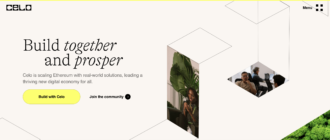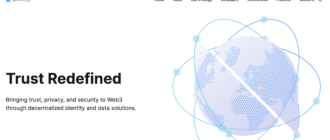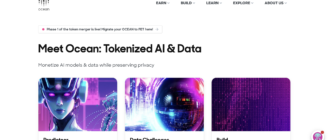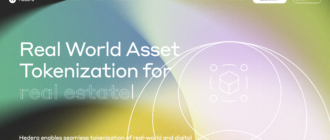In this article, we will delve into The Sandbox, a prominent blockchain-based virtual world, and its native cryptocurrency, SAND. Our exploration will cover the various facets of this innovative project, providing a comprehensive understanding of its structure and functionality. We will analyze its unique technological architecture, tokenomics, and the broader ecosystem it operates within. Furthermore, we will discuss the potential growth trajectories and future development predictions for The Sandbox and SAND. This detailed examination aims to equip readers with an in-depth knowledge of The Sandbox’s position in the ever-evolving landscape of blockchain technology and virtual economies.
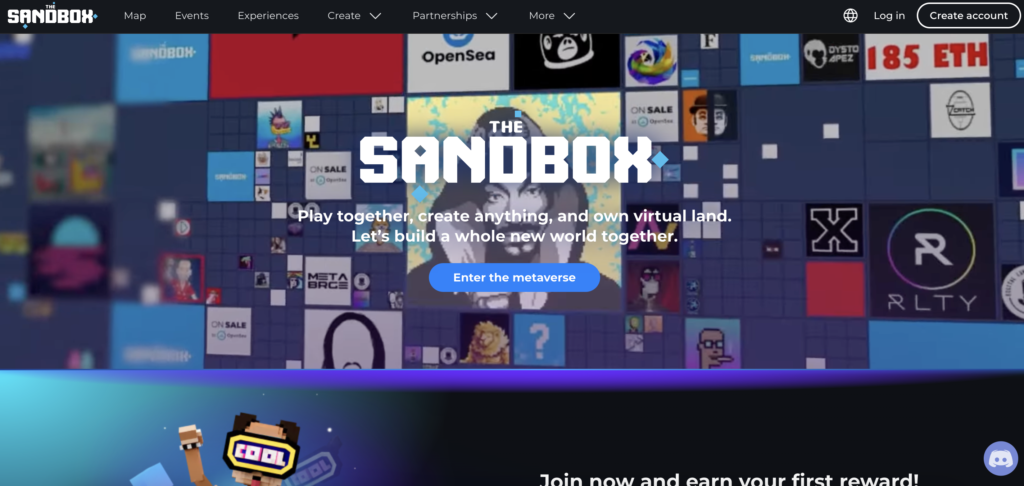
What is The Sandbox?
The Sandbox is a blockchain-based virtual metaverse built on the Ethereum blockchain, where players can create, own, and monetize their gaming experiences using the platform’s utility token, SAND. At its core, The Sandbox integrates user-generated content with decentralized finance (DeFi) and non-fungible tokens (NFTs), offering users absolute ownership over their digital creations. Within this metaverse, users can generate digital assets in the form of NFTs, upload them to the marketplace, and integrate them into customized games using tools such as VoxEdit and Game Maker. The primary goal of The Sandbox is to disrupt the traditional gaming industry by providing a decentralized platform that empowers creators and gamers with digital ownership and monetization opportunities.
History of the Project
The Sandbox originated as a mobile game developed by Pixowl, launching initially in 2012. The transition to a blockchain-based platform began in 2018 when Pixowl, under the guidance of Animoca Brands, saw the potential for integrating blockchain technology into the gaming ecosystem. Key milestones in the development of The Sandbox include:
- 2011-2016: Release of mobile games “The Sandbox” and “The Sandbox Evolution,” which collectively garnered over 40 million downloads.
- 2018: Pixowl announced the development of The Sandbox as a decentralized, blockchain-based virtual world.
- 2020: Successful alpha and beta testing phases, alongside multiple LAND sales that generated significant interest and revenue.
- 2021: Launch of the Sandbox Marketplace, allowing users to trade in-game assets and further monetize their creations.
- 2022: Continued expansion of the metaverse with partnerships involving major brands such as Adidas and The Walking Dead, enhancing the platform’s visibility and appeal.
- 2023: Introduction of the DAO (Decentralized Autonomous Organization) to give SAND token holders governance rights over the platform’s future development and policies.
The Sandbox continues to grow, fostering a vibrant ecosystem that encourages creativity, community participation, and economic opportunities through its comprehensive suite of tools and decentralized infrastructure.
How The Sandbox Works
The Sandbox operates as a decentralized virtual metaverse built on the Ethereum blockchain, where users can create, own, and monetize gaming experiences using blockchain technology and the platform’s native utility token, SAND. This ecosystem leverages several key technologies to achieve its goals and offers unique features that distinguish it from other blockchain-based projects.
Core Technologies and Their Roles
- Ethereum Blockchain: The Sandbox is built on Ethereum, utilizing its robust and secure infrastructure to manage digital assets and transactions. Ethereum’s smart contracts facilitate the creation and exchange of non-fungible tokens (NFTs), which represent in-game assets such as land, avatars, and various virtual items.
- Smart Contracts: Smart contracts on Ethereum automate various functions within The Sandbox ecosystem, ensuring secure and transparent transactions without the need for intermediaries. These contracts manage everything from asset creation and trading to staking and governance.
- VoxEdit: This tool allows users to create, rig, and animate 3D voxel assets, which can then be converted into NFTs and traded on the Sandbox Marketplace. VoxEdit plays a crucial role in enabling user-generated content within the platform.
- Sandbox Marketplace: A dedicated platform where users can buy, sell, and trade their NFTs. The marketplace supports the economic activities within The Sandbox, allowing creators to monetize their digital assets.
- Game Maker: This tool enables users to build and share interactive 3D games without any prior coding knowledge. It supports the integration of assets created in VoxEdit, allowing for a highly customizable gaming experience.
Differentiation from Other Projects
The Sandbox distinguishes itself through its comprehensive approach to user-generated content, robust economic incentives, and a vibrant ecosystem supported by various technological tools. Unlike traditional games where the platform owns and controls user-generated content, The Sandbox provides complete ownership and monetization rights to its users. This empowerment of creators is a significant departure from conventional gaming models.
Blockchain and Consensus Mechanism
The Sandbox utilizes the Ethereum blockchain, which operates on a Proof of Stake (PoS) consensus mechanism. This choice of consensus is pivotal for several reasons:
- Security and Decentralization: PoS enhances security by reducing the risk of centralization seen in Proof of Work (PoW) systems. Validators are selected based on the number of tokens they hold and are willing to stake, which also aligns their interests with the network’s health and security.
- Energy Efficiency: Unlike PoW, which requires substantial computational power and energy consumption, PoS is more environmentally friendly, as it does not rely on energy-intensive mining processes.
- Scalability: PoS allows for faster transaction processing and greater scalability, which is crucial for supporting the high volume of transactions in a vibrant virtual metaverse like The Sandbox.
Technical Details
- ERC-20 and ERC-721 Standards: SAND, the native utility token, is an ERC-20 token, used for all transactions within the ecosystem. Land and asset ownership is represented by ERC-721 tokens, which are a standard for NFTs on Ethereum.
- Merkle Trees and Cryptographic Hashing: Ethereum employs Merkle trees to ensure the integrity and immutability of data. Each block contains a cryptographic hash of the previous block, forming a secure chain that is resistant to tampering.
- Decentralized Autonomous Organization (DAO): The Sandbox is moving towards a DAO structure, where SAND token holders will participate in governance, influencing decisions about the platform’s development and policies. This decentralized governance model further enhances the project’s transparency and community involvement.
In summary, The Sandbox leverages advanced blockchain technologies and consensus mechanisms to create a secure, scalable, and user-centric metaverse. Its unique combination of tools and decentralized governance sets it apart in the rapidly evolving landscape of blockchain-based virtual worlds.
Tokenomics of The Sandbox
Is SAND a Token or a Coin?
SAND is a token, specifically an ERC-20 utility token built on the Ethereum blockchain. Unlike coins, which typically operate on their own independent blockchains (e.g., Bitcoin, Ethereum), tokens like SAND are built on existing blockchain platforms and rely on their infrastructure for operations and security.
SAND Tokenomics
The SAND token powers The Sandbox ecosystem, serving multiple critical functions. Its primary roles include enabling transactions within the platform, participating in governance, and providing staking opportunities.
Supply and Distribution
SAND has a maximum supply cap of 3 billion tokens. The token distribution is designed to ensure a balanced allocation across various stakeholders and uses:
- Binance Launchpad Sale: 12%
- Seed Sale: 17.18%
- Strategic Sale: 4%
- Foundation: 12%
- Team: 19%
- Advisors: 10%
- Company Reserve: 25.82%
Funding Rounds
The initial coin offering (ICO) and subsequent funding rounds have played a significant role in the token’s distribution and liquidity. Key funding events include:
- Seed Round (May 2019): Raised $3.41 million at an average price of $0.0036 per SAND.
- Strategic Sale (July 2020): Raised $600,000 at an average price of $0.005 per SAND.
- Public Sale (August 2020): Raised $3 million at an average price of $0.008333 per SAND.
- Series B Round (November 2021): Raised $93 million to further develop the ecosystem.
Token Utility
SAND serves as the cornerstone of The Sandbox’s economy. Its primary utilities include:
- In-Game Currency: Used to purchase LAND, assets, and other in-game items. Players use SAND to access and enjoy various experiences within the virtual world.
- Governance: As a governance token, SAND allows holders to participate in the decision-making processes of The Sandbox DAO (Decentralized Autonomous Organization). This includes voting on key proposals and influencing the future development of the platform.
- Staking: Users can stake SAND tokens to earn rewards, including additional SAND, Gems, and Catalysts, which are essential for creating high-value NFTs within the game.
Emission Model
The emission model for SAND is structured to ensure a gradual release of tokens into circulation, with full vesting expected by February 2025. This controlled release helps maintain market stability and incentivizes long-term participation from both players and investors.
Market Performance
SAND has experienced significant price fluctuations, reflecting broader market trends and the growing interest in metaverse projects. As of now, SAND is traded on major exchanges, including Binance, Kraken, and Uniswap. The token’s price has seen substantial appreciation from its initial sale prices, driven by increasing adoption and the platform’s expanding ecosystem.
Unique Aspects
What sets SAND apart from other utility tokens is its comprehensive integration within a virtual metaverse. The combination of play-to-earn mechanics, user-generated content, and a robust governance model makes The Sandbox a unique and attractive proposition in the blockchain gaming space.
Where to Buy SAND Token
The SAND token is widely available on several major cryptocurrency exchanges. Here is a list of exchanges where you can purchase SAND:
- Binance: Binance is one of the largest and most popular cryptocurrency exchanges globally. It offers a variety of trading pairs for SAND, including SAND/USDT, SAND/BTC, and SAND/BNB. Binance provides high liquidity and competitive trading fees.
- HTX (Huobi): HTX, formerly known as Huobi, is a leading global digital asset exchange. It supports multiple trading pairs for SAND and offers various features such as spot trading, futures contracts, and staking opportunities.
- MEXC: MEXC is a comprehensive cryptocurrency exchange that supports SAND trading. It is known for its user-friendly interface and wide range of supported assets, making it an excellent option for both novice and experienced traders.
- Bybit: Bybit is primarily known for its derivatives trading but also offers spot trading for SAND. Bybit provides a robust trading platform with advanced features, including margin trading and a variety of trading tools.
- KuCoin: KuCoin is a popular exchange that offers a wide range of cryptocurrencies, including SAND. It is known for its low fees, extensive range of supported coins, and user-friendly mobile app.
Where to Store SAND Token
When it comes to storing your SAND tokens, you have several options, ranging from hardware wallets for maximum security to software wallets for convenience.
- Ledger Nano S/X: Ledger hardware wallets are among the most secure options for storing SAND. They provide offline storage and robust security features, including a secure element and PIN protection.
- Trezor Model T: Trezor is another leading hardware wallet that supports SAND. It offers advanced security features and a user-friendly interface, making it a reliable option for long-term storage.
- MetaMask: MetaMask is a widely used software wallet that operates as a browser extension. It supports Ethereum-based tokens like SAND and allows users to interact with decentralized applications (dApps) directly from their browser.
- Trust Wallet: Trust Wallet is a mobile wallet that supports SAND and other ERC-20 tokens. It is known for its user-friendly interface and integrated features, such as staking and access to decentralized exchanges (DEXs).
- MyEtherWallet (MEW): MEW is a popular web-based wallet that provides a simple and secure way to store SAND. It offers various security features and allows users to manage their Ethereum-based assets easily.
Additional Storage Tips
- Security: Always enable two-factor authentication (2FA) and keep your recovery phrases secure.
- Backup: Regularly back up your wallet to prevent loss of access due to technical issues or device loss.
- Official Wallets: Consider using wallets recommended by the official project website to ensure compatibility and security.
By choosing the right exchange for purchasing and the appropriate wallet for storing your SAND tokens, you can manage your investments securely and efficiently.
Growth Prospects of The Sandbox
Basis for Growth
The growth of The Sandbox is driven by its innovative integration of blockchain technology with user-generated content and virtual real estate. This metaverse platform allows users to create, own, and monetize their digital experiences, which attracts a wide array of creators, gamers, and brands. Key factors contributing to the project’s growth include:
- User-Generated Content (UGC): The Sandbox empowers users to generate their own content using tools like VoxEdit and Game Maker, fostering a vibrant ecosystem of creators and developers.
- Play-to-Earn Model: This model incentivizes users by allowing them to earn SAND tokens through gameplay, enhancing user engagement and retention.
- Strategic Partnerships: Collaborations with high-profile brands and organizations bring mainstream attention and legitimacy to the platform.
- Expansion into New Markets: The Sandbox is expanding its reach globally, with significant growth in regions like Asia, where over 30% of its user base is located.
Key Clients and Partners
The Sandbox has formed partnerships with numerous well-known brands across various industries, enhancing its appeal and reach. Some notable partners include:
- Gaming: Ubisoft, Atari, and The Walking Dead
- Fashion: Gucci and Adidas
- Music and Entertainment: Snoop Dogg, Warner Music Group, and Deadmau5
- Corporate: HSBC and South China Morning Post
These partnerships allow The Sandbox to offer unique branded experiences and attract diverse user demographics.
Growth Forecast
Looking ahead, The Sandbox aims to expand its ecosystem further by introducing new features and enhancing its platform’s capabilities. Key initiatives include:
- AI Integration: The integration of AI to create more immersive and dynamic gaming experiences.
- Mobile Accessibility: Launching a mobile app to increase accessibility and user base.
- New Game Mechanics: Introducing new gameplay mechanics like farming, survival, and RPG elements to diversify the gaming experience.
- Creator Support: Continued support for creators through initiatives like the Game Maker Fund, which allocates significant resources to support high-quality content creation.
With these advancements, The Sandbox is well-positioned to maintain its growth trajectory and solidify its position as a leading metaverse platform.
Ecosystem of The Sandbox
Overview of the Ecosystem
The Sandbox ecosystem is a comprehensive virtual world where users can create, trade, and interact with digital assets. The core components of the ecosystem include:
- VoxEdit: A powerful tool for creating and animating 3D voxel models, which can be converted into NFTs.
- Game Maker: Allows users to create and publish their own games and experiences without any coding knowledge.
- Marketplace: A platform for trading NFTs, including virtual land, assets, and avatars.
Key Elements and Participants
- LAND: Virtual real estate within The Sandbox metaverse, represented by ERC-721 tokens. Users can buy, sell, and develop LAND to create unique experiences.
- SAND Token: The native utility token used for transactions, governance, and staking within the ecosystem.
- Gems and Catalysts: ERC-20 tokens that define the attributes and scarcity of in-game assets, enhancing their value and utility.
Major Ecosystem Partners
The Sandbox has established partnerships with various entities to enhance its ecosystem. Notable partners include:
- Technology: Arkane Network for wallet integration and Kyber Network for seamless token swaps.
- Marketplaces: Lootex for secondary market trading of NFTs.
- Education: Partnerships with institutions like Hong Kong University of Science and Technology (HKUST) and Hong Kong Design Institute (HKDI) for educational initiatives within the metaverse.
By fostering a diverse and dynamic ecosystem, The Sandbox continues to innovate and expand its offerings, providing users with a rich and engaging virtual world experience.
Conclusion
The Sandbox represents a significant advancement in the integration of blockchain technology with virtual worlds. Through its innovative use of decentralized systems, it offers new opportunities for users and developers alike. The ecosystem built around SAND showcases the potential of blockchain to revolutionize digital interactions and economies. As we look towards the future, The Sandbox is poised to play a crucial role in the evolution of decentralized virtual experiences.


